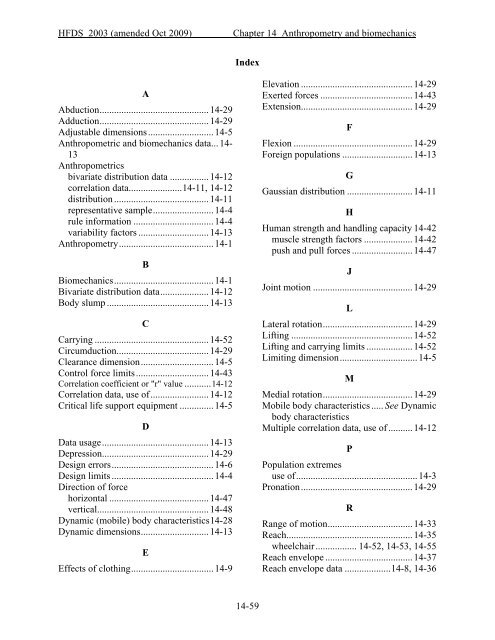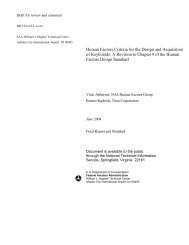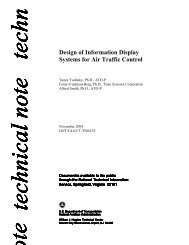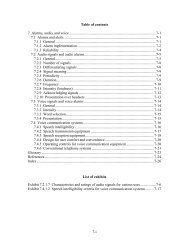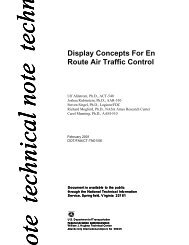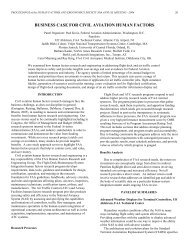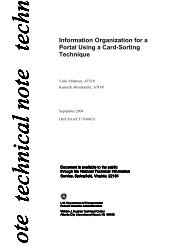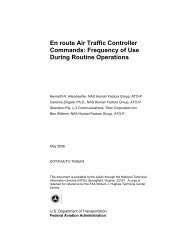Chapter 14. Anthropometry and Biomechanics - FAA
Chapter 14. Anthropometry and Biomechanics - FAA
Chapter 14. Anthropometry and Biomechanics - FAA
You also want an ePaper? Increase the reach of your titles
YUMPU automatically turns print PDFs into web optimized ePapers that Google loves.
HFDS 2003 (amended Oct 2009)<strong>Chapter</strong> 14 <strong>Anthropometry</strong> <strong>and</strong> biomechanicsIndexAAbduct ion...................................... .......14-29Adduction.............................................14-29Adjustable dimensions...........................14-5Anthropometric <strong>and</strong> biomechanics data... 14-13Anthropometricsbivariate distribution data ................14-12correlation data...................... 14-11, 14-12distribution .......................................14-11representative sample......................... 14-4rule information ................................. 14-4variability factors ............................. 14-13<strong>Anthropometry</strong>.......................................14-1B<strong>Biomechanics</strong>......................................... 14-1Bivariate distribution data....................14-12Body slump ..........................................14-13CCarrying ...............................................14-52Circumduction...................................... 14-29Clearance dimension..............................14-5Control force limits.............................. 14-43Correlation coefficient or "r" value ...........14-12Correlation data, use of........................ 14-12Critical life support equipment .............. 14-5DData us age......................................... ...14-13Depression............................................14-29Design errors..........................................14-6Design limits .......................................... 14-4Direction of forcehorizontal .........................................14-47vertical..............................................14-48Dynamic (mobile) body characteristics14-28Dynamic dimensions............................ 14-13EEffects of clothing..................................14-9Elevation ..............................................14-29Exerted forces ......................................14-43Extension..............................................14-29FFlexion .................................................14-29Foreign populations .............................14-13GGaussian distribution ........................... 14-11HHuman strength <strong>and</strong> h<strong>and</strong>ling capacity 14-42muscle strength factors ....................14-42push <strong>and</strong> pull forces ......................... 14-47JJoint motion ......................................... 14-29LLateral rotation..................................... 14-29Lifting .................................................. 14-52Lifting <strong>and</strong> carrying limits ................... 14-52Limiting dimension................................ 14-5MMedial rotation.....................................14-29Mobile body characteristics ..... See Dynamicbody characteristicsMultiple correlation data, use of ..........14-12PPopulation extremesuse of............ ...................................... 14-3Pronation..............................................14-29RRange of motion...................................14-33Reach....................................................14-35wheelchair................. 14-52, 14-53, 14-55Reach envelope ....................................14-37Reach envelope data ...................14-8, 14-3614-59


